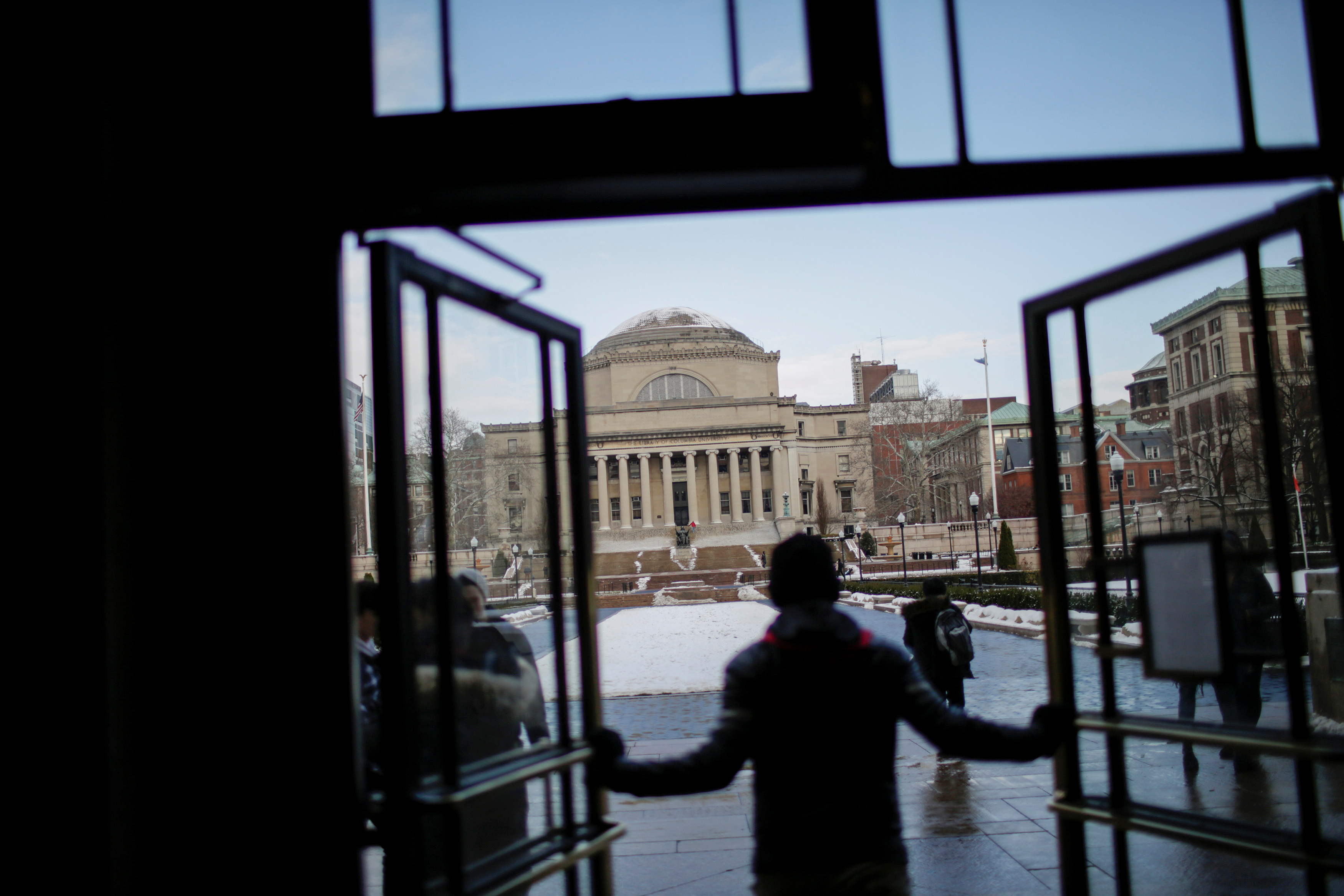Around 250,000 people turned out across Germany on Saturday in protests against the far-right AfD, which sparked an outcry after it emerged that the party's members discussed mass deportation plans at a meeting of extremists.

People take part in a demonstration against racism and far right politics, in Erfurt, eastern Germany on January 20, 2024.
© Jens Schlueter, AFP
By: NEWS WIRES
Issued on: 20/01/2024 -
Around 35,000 people joined a call under the banner "Defend democracy -- Frankfurt against the AfD", marching in Frankfurt. the financial heart of Germany, according to police.
A similar number, some carrying posters like "Nazis out", turned up in the northern city Hanover.
Another 30,000 turned out in the western city of Dortmund
In all, demonstrations have been called in about 100 locations across Germany from Friday through the weekend, including in Berlin on Sunday.
ARD public television put the total turnout on Saturday at 250,000.
Not only politicians but also churches and Bundesliga coaches have urged people to stand up against the AfD.
The wave of mobilisation against the far-right party was sparked by a January 10 report by investigative outlet Correctiv, which revealed that AfD members had discussed the expulsion of immigrants and "non-assimilated citizens" at a meeting with extremists.
Among the participants at the talks was Martin Sellner, a leader of Austria's Identitarian Movement, which subscribes to the "great replacement" conspiracy theory that claims there is a plot by non-white migrants to replace Europe's "native" white population.
Conservative split
News of the gathering sent shockwaves across Germany at a time when the AfD is soaring in opinion polls, just months ahead of three major regional elections in eastern Germany where their support is strongest.
The anti-immigration party confirmed the presence of its members at the meeting, but has denied taking on the "remigration" project championed by Sellner.
But leading politicians including Chancellor Olaf Scholz, who joined a demonstration last weekend, said any plan to expel immigrants or citizens alike amounted to "an attack against our democracy, and in turn, on all of us".
He urged "all to take a stand -- for cohesion, for tolerance, for our democratic Germany".
Interior Minister Nancy Faeser went so far as to say in the newspapers of the Funke press group that the far-right meeting was reminiscent of "the horrible Wannsee conference", where the Nazis planned the extermination of European Jews in 1942.
Friedrich Merz, the leader of the opposition conservatives CDU party, also wrote on X that it was "very encouraging that thousands of people are demonstrating peacefully against right-wing extremism".
But besides members of the AfD, two members of the hard-right faction Werteunion of the CDU were also at the meeting near Potsdam cited by Correctiv.
Amid the outrage over the Potsdam meeting, the Werteunion's leader Hans-Georg Maassen said Saturday it had decided to split from the CDU.
The group said it has about 4,000 members, many of whom were originally members of the CDU or the CDU's Bavarian sister party CSU.
(AFP)
Around 35,000 people joined a call under the banner "Defend democracy -- Frankfurt against the AfD", marching in Frankfurt. the financial heart of Germany, according to police.
A similar number, some carrying posters like "Nazis out", turned up in the northern city Hanover.
Another 30,000 turned out in the western city of Dortmund
In all, demonstrations have been called in about 100 locations across Germany from Friday through the weekend, including in Berlin on Sunday.
ARD public television put the total turnout on Saturday at 250,000.
Not only politicians but also churches and Bundesliga coaches have urged people to stand up against the AfD.
The wave of mobilisation against the far-right party was sparked by a January 10 report by investigative outlet Correctiv, which revealed that AfD members had discussed the expulsion of immigrants and "non-assimilated citizens" at a meeting with extremists.
Among the participants at the talks was Martin Sellner, a leader of Austria's Identitarian Movement, which subscribes to the "great replacement" conspiracy theory that claims there is a plot by non-white migrants to replace Europe's "native" white population.
Conservative split
News of the gathering sent shockwaves across Germany at a time when the AfD is soaring in opinion polls, just months ahead of three major regional elections in eastern Germany where their support is strongest.
The anti-immigration party confirmed the presence of its members at the meeting, but has denied taking on the "remigration" project championed by Sellner.
But leading politicians including Chancellor Olaf Scholz, who joined a demonstration last weekend, said any plan to expel immigrants or citizens alike amounted to "an attack against our democracy, and in turn, on all of us".
He urged "all to take a stand -- for cohesion, for tolerance, for our democratic Germany".
Interior Minister Nancy Faeser went so far as to say in the newspapers of the Funke press group that the far-right meeting was reminiscent of "the horrible Wannsee conference", where the Nazis planned the extermination of European Jews in 1942.
Friedrich Merz, the leader of the opposition conservatives CDU party, also wrote on X that it was "very encouraging that thousands of people are demonstrating peacefully against right-wing extremism".
But besides members of the AfD, two members of the hard-right faction Werteunion of the CDU were also at the meeting near Potsdam cited by Correctiv.
Amid the outrage over the Potsdam meeting, the Werteunion's leader Hans-Georg Maassen said Saturday it had decided to split from the CDU.
The group said it has about 4,000 members, many of whom were originally members of the CDU or the CDU's Bavarian sister party CSU.
(AFP)
Germany: Marches against the far-right draw over 200,000
Hundreds of thousands of people took to the streets in demonstrations against far-right extremism in cities across Germany. Rallies were expected in more than 100 German cities and towns over the weekend.
https://p.dw.com/p/4bVEC
Some 35,000 people gathered in Frankfurt to protest against far-right extremism in Germany
https://p.dw.com/p/4bVEC
Some 35,000 people gathered in Frankfurt to protest against far-right extremism in Germany
Michael Probst/AP Photo/picture alliance
Details of a plan concocted in a secret meeting of right-wing extremists and the far-right Alternative for Germany (AfD) party to deport millions of migrants and minorities have led to a surge in pro-democracy marches and protests in cities across the country.
An estimated 300,000 people bundled up against freezing weather for protests in Hamburg, Frankfurt, Hanover, Kassel, Dortmund, Wuppertal, Karlsruhe, Nuremberg, Erfurt and other German cities and towns, with some placards playing on the Alternative for Germany party's name: "Fascism isn't an alternative."

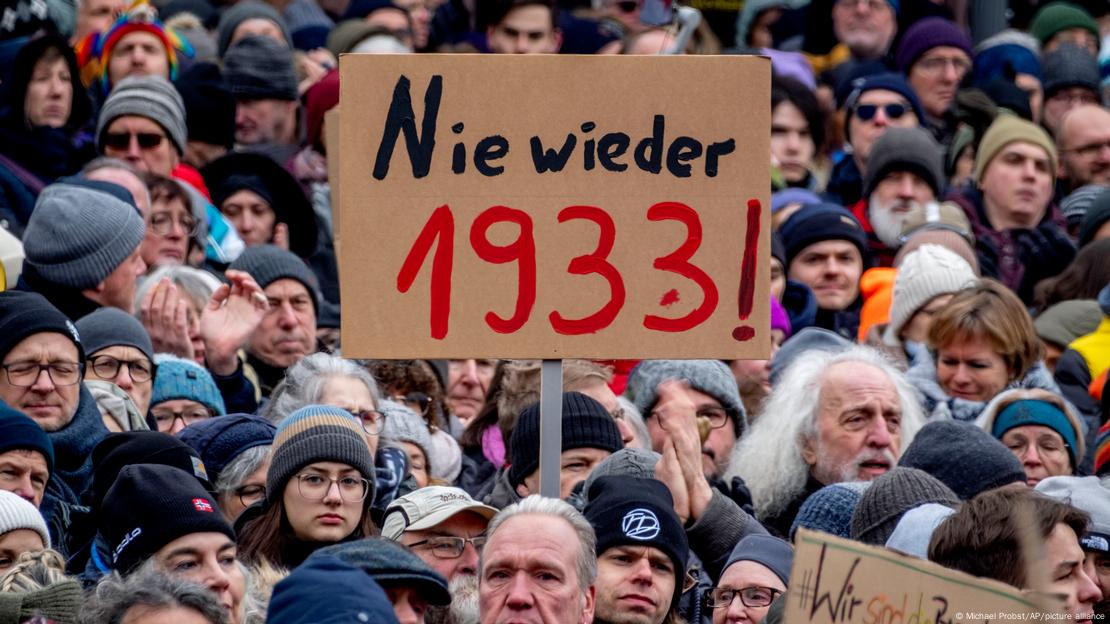
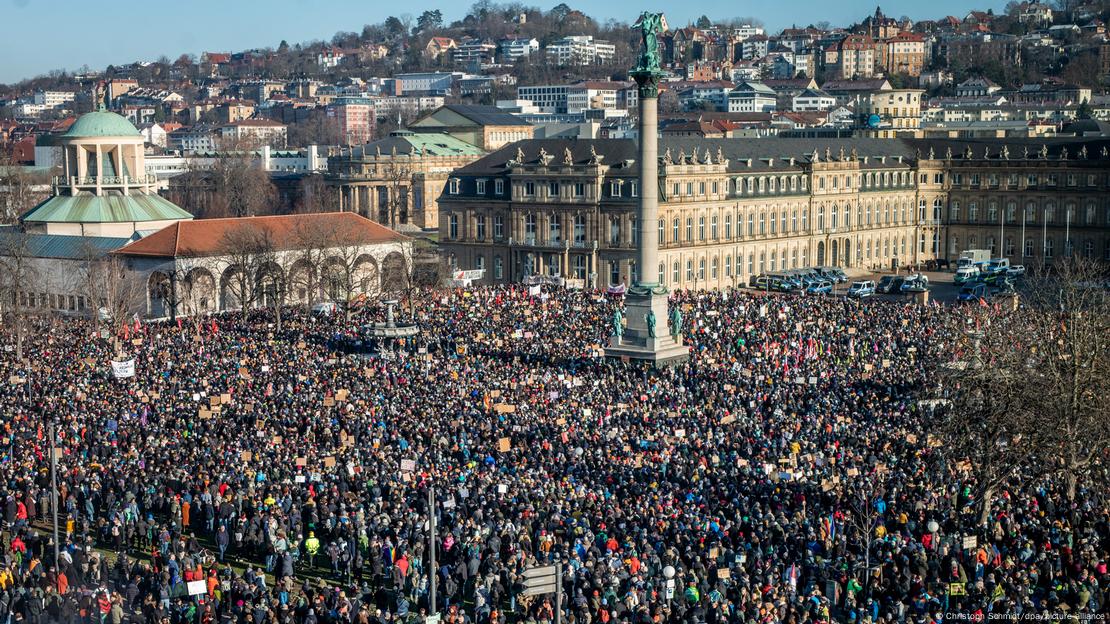
Why are so many people protesting now?
The demonstrations were sparked by a report from news outlet Correctiv that detailed how AfD members met withfar-right extremists in November in Potsdam. Members of the conservative Christian Democratic Union (CDU), the largest opposition party, also attended.
Participants at the meeting, discussed "remigration," a term frequently used in far-right circles as a euphemism for the expulsion of immigrants and minorities, including those who are naturalized German citizens.
News of the gathering shocked many in Germany, at a time when the AfD is riding high in opinion polls before three major regional elections in eastern Germany — where the party's support is strongest.
The anti-immigration party confirmed the presence of its members at the meeting, but contends that its proposals for remigration, which were part of its last election manifesto, do not involve naturalized German citizens. Those comments at the meeting were made by an Austrian far-right figure, Martin Sellner, who is not an AfD member.
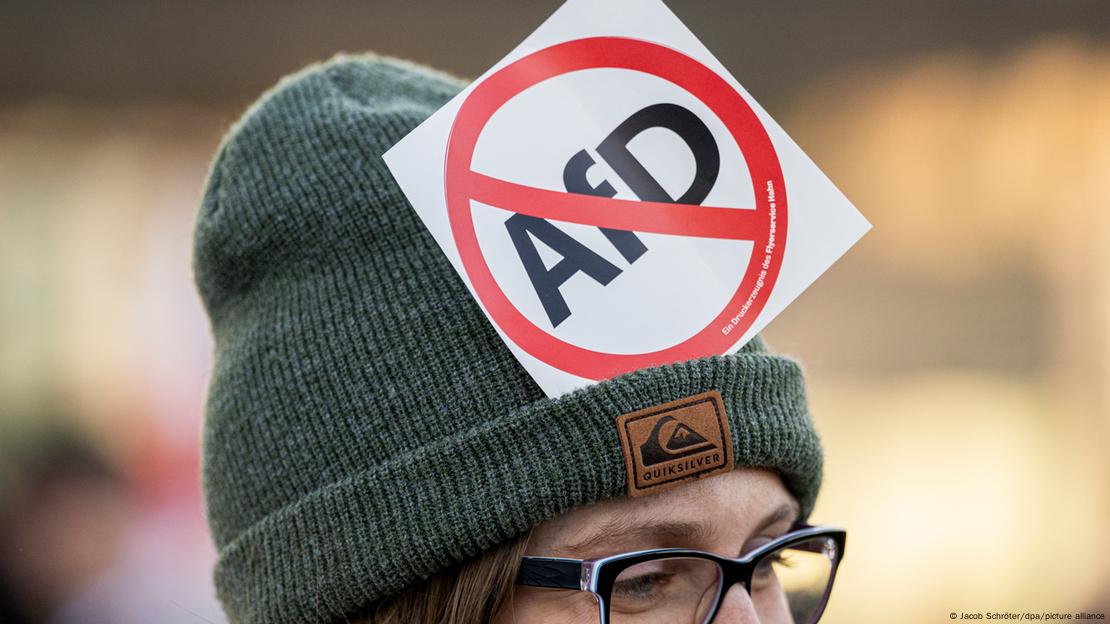
German politicians speak out
Leading politicians, including Chancellor Olaf Scholz, who joined a demonstration last weekend along with Foreign Minister Annalena Baerbock, said any plan to expel immigrants or citizens alike amounted to "an attack against our democracy, and in turn, on all of us."
He called on people "all to take a stand — for cohesion, for tolerance, for our democratic Germany."
Interior Minister Nancy Faeser pointed out that the far-right extremists groups met at a Potsdam hotel near where the Nazi party on January 20, 1942 — exactly 82 years ago — coordinated the "Final Solution of the Jewish Question" and discussed the systematic murder of millions of Jews in Europe.
"It involuntarily brings back memories of the terrible Wannsee Conference," she told the Funke Mediengruppe on Saturday.
Emphasizing that she did not want to equate the two, she said it was important to be clear that "what is hidden behind harmless-sounding terms such as 'remigration' is the idea of expelling and deporting people en masse because of their ethnic origin or their political views."
In North Rhine-Westphalia, Germany's most populous state, Premier Hendrik Wüst of the CDU called for an "alliance of the center" across all parties and levels of government.
"We need the democrats to stand shoulder to shoulder," he said, going on to call the AfD a "dangerous Nazi party" that is not grounded in Germany's constitution.
Friedrich Merz, the leader of the opposition CDU, posted on X, formerly Twitter, that it was "very encouraging that thousands of people are demonstrating peacefully against right-wing extremism." He did not comment on the CDU members present at the Potsdam meeting.
VIDEO Germany: Tens of thousands rally against the far right 01:45
sms/jcg (AFP, DPA, AP)
Details of a plan concocted in a secret meeting of right-wing extremists and the far-right Alternative for Germany (AfD) party to deport millions of migrants and minorities have led to a surge in pro-democracy marches and protests in cities across the country.
An estimated 300,000 people bundled up against freezing weather for protests in Hamburg, Frankfurt, Hanover, Kassel, Dortmund, Wuppertal, Karlsruhe, Nuremberg, Erfurt and other German cities and towns, with some placards playing on the Alternative for Germany party's name: "Fascism isn't an alternative."

"Fascists as a party are still fascists," warned one sign written in the light blue color associated with the AfD
Thomas Frey/dpa/picture alliance
Huge demonstrations in Frankfurt, Hanover
About 35,000 people gathered in Frankfurt on Saturday for a "defend democracy" march. Protesters filled the central square, where organizers planned to hold the rally, as well as a second nearby square and the streets in between. Police said the demonstration peaceful.
One of the Frankfurt protest's co-organizers, Peter Josiger, said the deportation plans discussed at the Potsdam secret meeting were "nothing less than an attack on the basis of our coexistence" and called for "an active stand against the right from the entire breadth of society."
Former German President Christian Wulff and the premier of the state of Lower Saxony, Stephan Weil, addressed about 35,000 people on Hanover's Opera Square. Protesters carried banners with slogans including "We are diverse" and "Voting AfD is so 1933."
About 35,000 people gathered in Frankfurt on Saturday for a "defend democracy" march. Protesters filled the central square, where organizers planned to hold the rally, as well as a second nearby square and the streets in between. Police said the demonstration peaceful.
One of the Frankfurt protest's co-organizers, Peter Josiger, said the deportation plans discussed at the Potsdam secret meeting were "nothing less than an attack on the basis of our coexistence" and called for "an active stand against the right from the entire breadth of society."
Former German President Christian Wulff and the premier of the state of Lower Saxony, Stephan Weil, addressed about 35,000 people on Hanover's Opera Square. Protesters carried banners with slogans including "We are diverse" and "Voting AfD is so 1933."

Signs such as this one ("Never again 1933!") recalled the rise of the Nazi party, the horrors of the Holocaust and World War II
Michael Probst/AP/picture alliance
On Friday, a massive rally in Hamburg had to be stopped early as far more people than expected turned out. The largest protest of its sort so far, police said there were 50,000 people and organizers put the number 80,000, pointing out that the rally was called to a close before many were able to reach it.
Police estimates of crowd sizes at other protests included: 12,000 in Kassel, 7,000 each in Dortmund and Wuppertal, 20,000 in Karlsruhe, at least 10,000 in Nuremberg, about 16,000 in Halle/Saale, 5,000 in Koblenz and several thousand in Erfurt.
More protests are expected on Sunday, including in Berlin, Munich Cologne, Dresden, Leipzig and Bonn.
On Friday, a massive rally in Hamburg had to be stopped early as far more people than expected turned out. The largest protest of its sort so far, police said there were 50,000 people and organizers put the number 80,000, pointing out that the rally was called to a close before many were able to reach it.
Police estimates of crowd sizes at other protests included: 12,000 in Kassel, 7,000 each in Dortmund and Wuppertal, 20,000 in Karlsruhe, at least 10,000 in Nuremberg, about 16,000 in Halle/Saale, 5,000 in Koblenz and several thousand in Erfurt.
More protests are expected on Sunday, including in Berlin, Munich Cologne, Dresden, Leipzig and Bonn.

About 20,000 people were reported to have attended a pro-democracy rally in Stuttgart
Christoph Schmidt/dpa/picture alliance
Why are so many people protesting now?
The demonstrations were sparked by a report from news outlet Correctiv that detailed how AfD members met withfar-right extremists in November in Potsdam. Members of the conservative Christian Democratic Union (CDU), the largest opposition party, also attended.
Participants at the meeting, discussed "remigration," a term frequently used in far-right circles as a euphemism for the expulsion of immigrants and minorities, including those who are naturalized German citizens.
News of the gathering shocked many in Germany, at a time when the AfD is riding high in opinion polls before three major regional elections in eastern Germany — where the party's support is strongest.
The anti-immigration party confirmed the presence of its members at the meeting, but contends that its proposals for remigration, which were part of its last election manifesto, do not involve naturalized German citizens. Those comments at the meeting were made by an Austrian far-right figure, Martin Sellner, who is not an AfD member.

Since the relevations of the far-right meeting in Potsdam, some in Germany have called for banning the AfD
Jacob Schröter/dpa/picture alliance
German politicians speak out
Leading politicians, including Chancellor Olaf Scholz, who joined a demonstration last weekend along with Foreign Minister Annalena Baerbock, said any plan to expel immigrants or citizens alike amounted to "an attack against our democracy, and in turn, on all of us."
He called on people "all to take a stand — for cohesion, for tolerance, for our democratic Germany."
Interior Minister Nancy Faeser pointed out that the far-right extremists groups met at a Potsdam hotel near where the Nazi party on January 20, 1942 — exactly 82 years ago — coordinated the "Final Solution of the Jewish Question" and discussed the systematic murder of millions of Jews in Europe.
"It involuntarily brings back memories of the terrible Wannsee Conference," she told the Funke Mediengruppe on Saturday.
Emphasizing that she did not want to equate the two, she said it was important to be clear that "what is hidden behind harmless-sounding terms such as 'remigration' is the idea of expelling and deporting people en masse because of their ethnic origin or their political views."
In North Rhine-Westphalia, Germany's most populous state, Premier Hendrik Wüst of the CDU called for an "alliance of the center" across all parties and levels of government.
"We need the democrats to stand shoulder to shoulder," he said, going on to call the AfD a "dangerous Nazi party" that is not grounded in Germany's constitution.
Friedrich Merz, the leader of the opposition CDU, posted on X, formerly Twitter, that it was "very encouraging that thousands of people are demonstrating peacefully against right-wing extremism." He did not comment on the CDU members present at the Potsdam meeting.
VIDEO Germany: Tens of thousands rally against the far right 01:45
sms/jcg (AFP, DPA, AP)
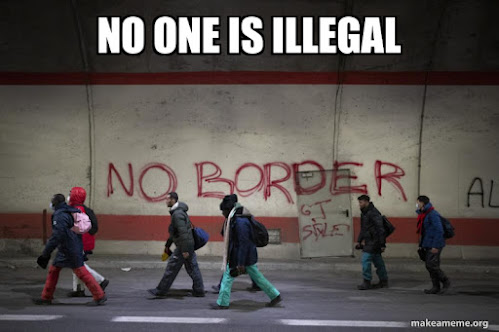

 The protesters gathered in central Tel Aviv in their thousands © AHMAD GHARABLI / AFP
The protesters gathered in central Tel Aviv in their thousands © AHMAD GHARABLI / AFP









